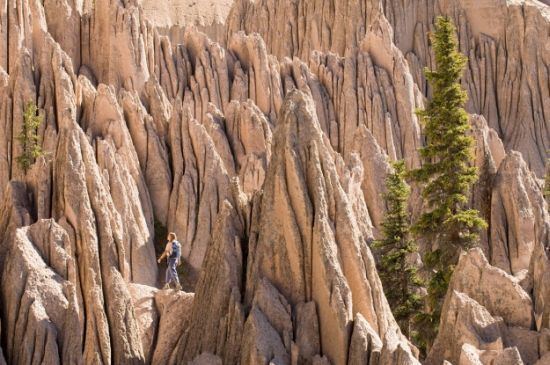 | ||
Location Colorado, United States | ||
The San Juan Mountains, in southwestern Colorado, consist mainly of volcanic rocks that form the largest remnant of a major composite volcanic field that covered most of the southern Rocky Mountains in middle Tertiary time. Within the region, lies an abundance of caldera volcanoes which comprise the San Juan Volcanic Fields. There are approximately 15 calderas known in the San Juan Volcanic Fields, however it is possible that there are 2, or even 3 more, that exist in the region. The region began with many composite volcanoes that became active between 35 and 40 million years ago were particularly eruptive in the time period around 35-30 million years ago. Around this time the activity changed to explosive ash-flow eruptions. Many of these volcanoes experienced caldera collapse, resulting in the 15-18 caldera volcanoes in the region today.
Contents
Map of San Juan volcanic field, Colorado 81130, USA
Phases of Volcanism
The San Juan volcanic field contains two phases of volcanism.
The earlier volcanism is Oligocene in age, and consists of largely intermediate composition lavas and breccias. A few ash flow tuffs also constitute this phase of volcanism.
The later volcanism is Miocene–Pliocene in age, and is basaltic in composition. It is best interpreted as a partial melt of the lower crust that was erupted onto the surface.
